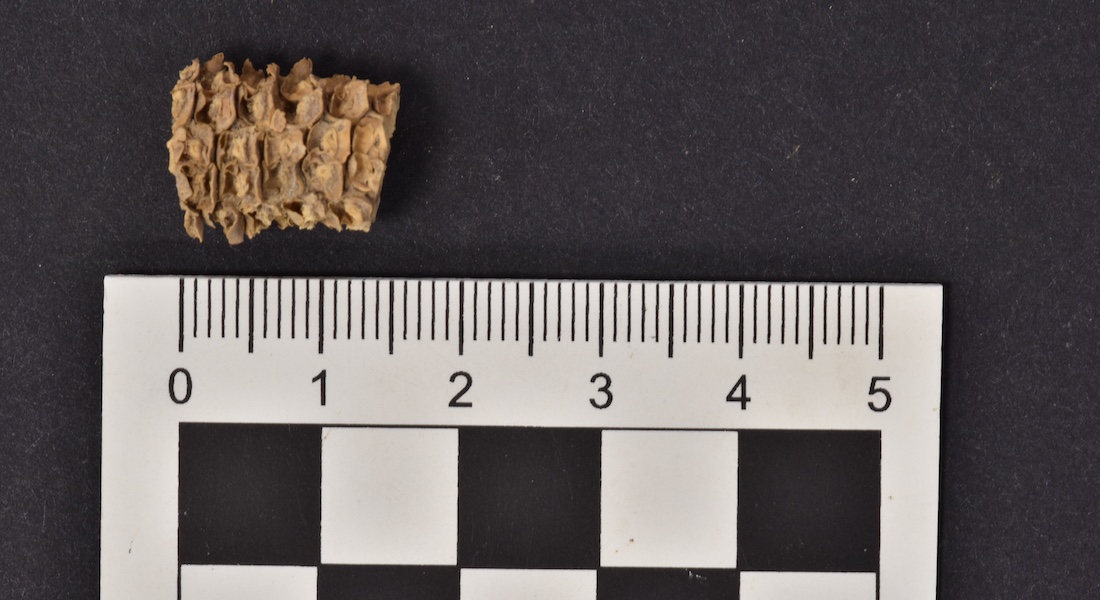Ancient maize genomes reveal the early evolutionary history of commercially important flint and dent varieties
A study published in Cell uncovers the deep evolutionary roots of flint and dent maize, two foundational varieties central to modern maize breeding and cultivation. By analysing the genomes of 32 ancient maize samples spanning the last 3,000 years, researchers have reconstructed the journey of maize into eastern North America, shedding new light on its geographic origins, dispersal routes, and history of selection.

This study was carried out by an international team of scientists and spearheaded by Jazmín Ramos Madrigal from the Center for Evolutionary Hologenomics at the University of Copenhagen, Denmark, and Nathan Wales from the Department of Archaeology at the University of York, UK.
A genetic link between Northern Flints and 1,000-year-old Ozark maize
By reconstructing the genomes of archaeological maize cobs and kernels, the study reveals that 1,000-year-old maize from the Ozark rockshelters in Arkansas, US, shares a close genetic link with modern Northern Flint varieties. Known for their cold tolerance and hardiness, these ancient flints form the backbone of many commercial maize hybrids cultivated today.
“Our research shows that this lineage of maize, which makes up the ancestry of most commercial maize, shares its roots with maize grown by Indigenous Peoples in the Ozark region over 1,000 years ago” explained Nathan Wales.
The long journey of maize
Eastern North America represents one of the last stops in maize's dispersion from its domestication center in southern Mexico. The path maize took to reach eastern North America has long been debated, with two competing hypotheses: one proposing a route through eastern Mexico and across the Gulf coast of Texas, and another suggesting maize traveled across the Great Plains from the U.S. Southwest.
The study provides clear evidence supporting the latter. Ancient maize genomes from the Ozark rockshelters indicate that maize entered eastern North America in at least two dispersion pulses, tracing ancestry to both the upland U.S. Southwest and southern Texas.
“One of the ancestries we find in the Ozarks comes from maize already adapted to growing in the colder and shorter days of upland U.S. Southwest. This suggests that maize could only be introduced into eastern North America once humans bred local varieties with the genetic tools to cope with the challenging environment of the region,” noted Jazmin Ramos-Madrigal.
Evolutionary adaptations
The study also highlights repeated selection on maize's starch metabolic pathway during its dispersion into eastern North America. A key gene in this pathway, known as waxy, which influences kernel texture, showed clear signs of selection in ancient Ozark maize 1,000 years ago. Genetic variants in the waxy gene affect the stickiness and chewiness of maize, traits that are still valued in some traditional cuisines today.
“This suggests that Indigenous farmers were not only adapting maize to local climates but might also be selecting for traits that suited their specific culinary preferences,” explained Wales. “Our research provides another piece of the puzzle that is the chronology of selection and adaptation during maize domestication, by showing this gene was selected sometime between maize departure from the US Southwest and its arrival into eastern North America at least a thousand years ago” added Jazmin Ramos-Madrigal.
Ancient DNA illuminates human history
This study highlights how ancient DNA can illuminate the origins and adaptations of crops that shaped human history. By tracing maize's journey and adaptation into eastern North America, the research not only advances our understanding on the early origins and evolution of maize, one of the three pillars of modern agriculture, but also provides new insights into the evolutionary history of one of the world's most important crops.
Read the publication in Cell here.
Contact:
Assistant Professor Jazmín Ramos Madrigal
Center for Evolutionary Hologenomics, Globe Institute, University of Copenhagen
email: jazmin.madrigal@sund.ku.dk
Lecturer Nathan Wales
Department of Archaeology, University of York
email: nathan.wales@york.ac.uk
